
Michela Leonardi
@mikleonardi.bsky.social
#Biodiversity modeller. Special focus on #paleoecology, #paleoclimate, #prehistory. Working at NHM London @nhm-london.bsky.social and Evolutionary Ecology Group @eegcam.bsky.social Cambridge University (UK). She/her
Pinned
Michela Leonardi
@mikleonardi.bsky.social
· Jun 18
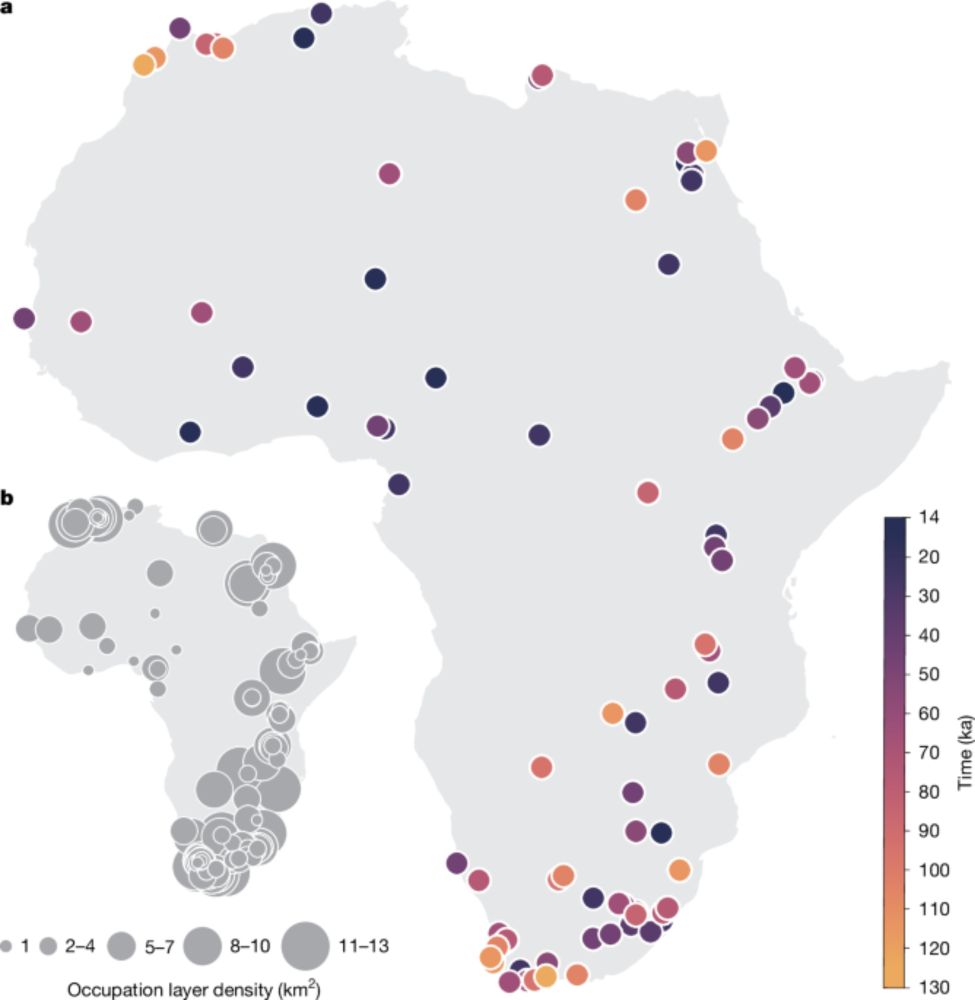
Major expansion in the human niche preceded out of Africa dispersal - Nature
Analysis of species distribution models in a pan-African database comprising chronometrically dated archaeological sites over the past 120,000 years shows major expansion in the human niche from 70 ka...
www.nature.com
after 6 years, finally out in @nature.com!
Huge expansion of the human #niche in Africa ~70kya likely equipped later #outofAfrica dispersals with unique ecological flexibility
co-led with Emily Hallett @eegcam.bsky.social & @elliescerri.bsky.social
#prehistory #humanevolution #paleoecology #SDM
Huge expansion of the human #niche in Africa ~70kya likely equipped later #outofAfrica dispersals with unique ecological flexibility
co-led with Emily Hallett @eegcam.bsky.social & @elliescerri.bsky.social
#prehistory #humanevolution #paleoecology #SDM
Reposted by Michela Leonardi
The revelation that endometriosis is linked to autoimmune disorders is opening up a whole new way to treat this painful and poorly understood condition

A deeper understanding of endometriosis is suggesting new treatments
The revelation that endometriosis is linked to autoimmune disorders is opening up a whole new way to treat this painful and poorly understood condition
www.newscientist.com
September 23, 2025 at 7:53 PM
The revelation that endometriosis is linked to autoimmune disorders is opening up a whole new way to treat this painful and poorly understood condition
Reposted by Michela Leonardi
I couldn’t be more excited about being given the chance to present some of the work we do at @eegcam.bsky.social this November & to listen to the talks by such an incredible line up of speakers! 🤩
August 28, 2025 at 5:09 PM
I couldn’t be more excited about being given the chance to present some of the work we do at @eegcam.bsky.social this November & to listen to the talks by such an incredible line up of speakers! 🤩
Reposted by Michela Leonardi
The distribution of early human settlements in Sub-Saharan Africa might have been influenced by avoidance of mosquitoes that spread malaria
A new #prelight of Alejandra Leffer's group talks about the preprint by @margheritac17.bsky.social , and the team.
A new #prelight of Alejandra Leffer's group talks about the preprint by @margheritac17.bsky.social , and the team.

Malaria shaped human spatial organisation for the last 74 thousand years - preLights
The distribution of early human settlements in Sub-Saharan Africa might have been influenced by avoidance of mosquitoes that spread malaria
prelights.biologists.com
August 20, 2025 at 10:43 AM
The distribution of early human settlements in Sub-Saharan Africa might have been influenced by avoidance of mosquitoes that spread malaria
A new #prelight of Alejandra Leffer's group talks about the preprint by @margheritac17.bsky.social , and the team.
A new #prelight of Alejandra Leffer's group talks about the preprint by @margheritac17.bsky.social , and the team.
Reposted by Michela Leonardi
🚨🧬New #preprint and R package from the lab out in @biorxivpreprint.bsky.social🧬🚨: 'tidygenclust' combines the functionality of ADMIXTURE, fastmixture and Clumppling into R - allowing for reproducible clustering analyses and plotting all in one place!
www.biorxiv.org/content/10.1...
www.biorxiv.org/content/10.1...

tidygenclust: Clustering for Population Genetics in R
Background Population structure analysis is crucial for evolutionary research and medical genomics. Clustering methods, broadly categorized as model-based (e.g. ADMIXTURE) or non-model-based (e.g. SCO...
www.biorxiv.org
August 7, 2025 at 9:49 AM
🚨🧬New #preprint and R package from the lab out in @biorxivpreprint.bsky.social🧬🚨: 'tidygenclust' combines the functionality of ADMIXTURE, fastmixture and Clumppling into R - allowing for reproducible clustering analyses and plotting all in one place!
www.biorxiv.org/content/10.1...
www.biorxiv.org/content/10.1...
Reposted by Michela Leonardi
Thank you @prelights.bsky.social & Alejandra Leffer's group for choosing our preprint on @biorxiv-evobio.bsky.social and for this chance to talk about human- #malaria coevolution!🦟
@eegcam.bsky.social @elliescerri.bsky.social @MPI_GEA
@eegcam.bsky.social @elliescerri.bsky.social @MPI_GEA
The distribution of early human settlements in Sub-Saharan Africa might have been influenced by avoidance of mosquitoes that spread malaria
A new #prelight of Alejandra Leffer's group talks about the preprint by @margheritac17.bsky.social , and the team.
A new #prelight of Alejandra Leffer's group talks about the preprint by @margheritac17.bsky.social , and the team.

Malaria shaped human spatial organisation for the last 74 thousand years - preLights
The distribution of early human settlements in Sub-Saharan Africa might have been influenced by avoidance of mosquitoes that spread malaria
prelights.biologists.com
August 22, 2025 at 12:47 PM
Thank you @prelights.bsky.social & Alejandra Leffer's group for choosing our preprint on @biorxiv-evobio.bsky.social and for this chance to talk about human- #malaria coevolution!🦟
@eegcam.bsky.social @elliescerri.bsky.social @MPI_GEA
@eegcam.bsky.social @elliescerri.bsky.social @MPI_GEA
Reposted by Michela Leonardi
News flash! ⚡ GBIF establishes an international task group led by Dr Lydia Jennings on Indigenous data governance to offer input and guidance for implementing the #CAREPrinciples within the GBIF network 🌱
Read more: 🔗 https://gbif.link/IDG
@localcontexts.bsky.social
Read more: 🔗 https://gbif.link/IDG
@localcontexts.bsky.social
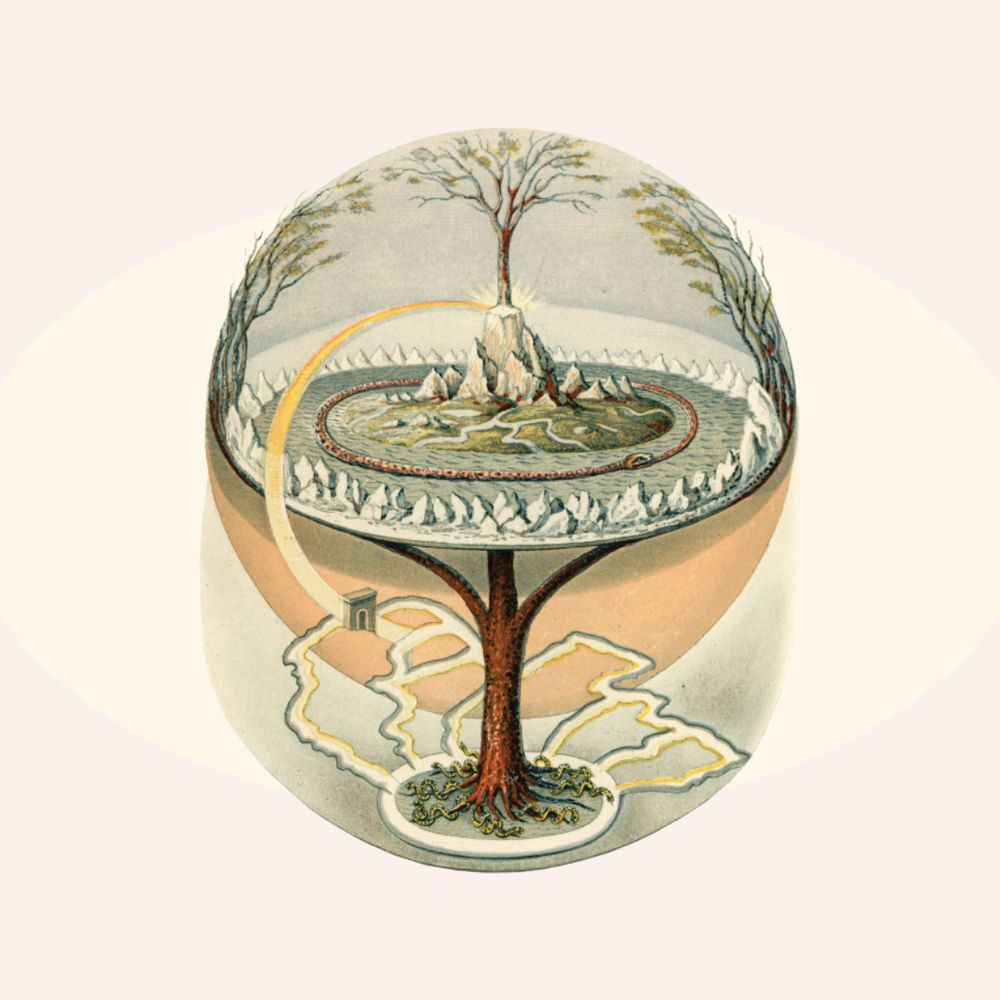
July 28, 2025 at 7:10 AM
News flash! ⚡ GBIF establishes an international task group led by Dr Lydia Jennings on Indigenous data governance to offer input and guidance for implementing the #CAREPrinciples within the GBIF network 🌱
Read more: 🔗 https://gbif.link/IDG
@localcontexts.bsky.social
Read more: 🔗 https://gbif.link/IDG
@localcontexts.bsky.social
#Newpaper: the African Humid period through the lenses of pollen-based and mechanistic-based #palaeoclimate reconstructions!
Thanks @ecologypast.bsky.social, @markuslfischer.bsky.social, @paleoclimategirl.bsky.social and all coauthors!
Thanks @ecologypast.bsky.social, @markuslfischer.bsky.social, @paleoclimategirl.bsky.social and all coauthors!
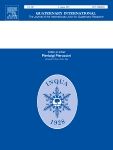
A multi-model approach to the spatial and temporal characterization of the African Humid Period
During the last c. 20,000 years, African climates experienced temperature shifts related to the last period of global deglaciation and moisture availa…
www.sciencedirect.com
July 28, 2025 at 6:45 AM
#Newpaper: the African Humid period through the lenses of pollen-based and mechanistic-based #palaeoclimate reconstructions!
Thanks @ecologypast.bsky.social, @markuslfischer.bsky.social, @paleoclimategirl.bsky.social and all coauthors!
Thanks @ecologypast.bsky.social, @markuslfischer.bsky.social, @paleoclimategirl.bsky.social and all coauthors!
Reposted by Michela Leonardi
Pollen-based reconstructions and a mechanistic climate model tell a similar story on the Africa Humid Period; @mikleonardi.bsky.social and Andrea contributed to a proxy-model comparison paper led by @ecologypast.bsky.social in Quatern. Int.: authors.elsevier.com/sd/article/S...
ScienceDirect.com | Science, health and medical journals, full text articles and books.
authors.elsevier.com
July 25, 2025 at 1:38 PM
Pollen-based reconstructions and a mechanistic climate model tell a similar story on the Africa Humid Period; @mikleonardi.bsky.social and Andrea contributed to a proxy-model comparison paper led by @ecologypast.bsky.social in Quatern. Int.: authors.elsevier.com/sd/article/S...
Reposted by Michela Leonardi
It’s our most controversial episode yet! What do Josh and Natalie think is OVERRATED? Do you agree???
m.youtube.com/watch?v=2IKx...
m.youtube.com/watch?v=2IKx...
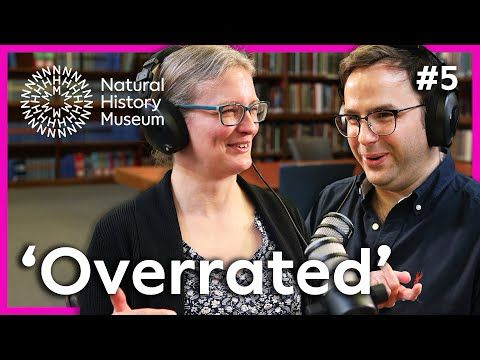
Josh doesn't care about T. rex lips | The 'Perfect' Specimen Ep5
YouTube video by Natural History Museum
m.youtube.com
July 21, 2025 at 7:16 AM
It’s our most controversial episode yet! What do Josh and Natalie think is OVERRATED? Do you agree???
m.youtube.com/watch?v=2IKx...
m.youtube.com/watch?v=2IKx...
Reposted by Michela Leonardi
Hindcasted species distribution modelling of baboons illuminates potential refugia across Africa and Arabia, with predicted maxima and minima of habitable ranges pulsed by orbital precession and obliquity expressed within the last precessional cycle. www.nature.com/articles/s42...
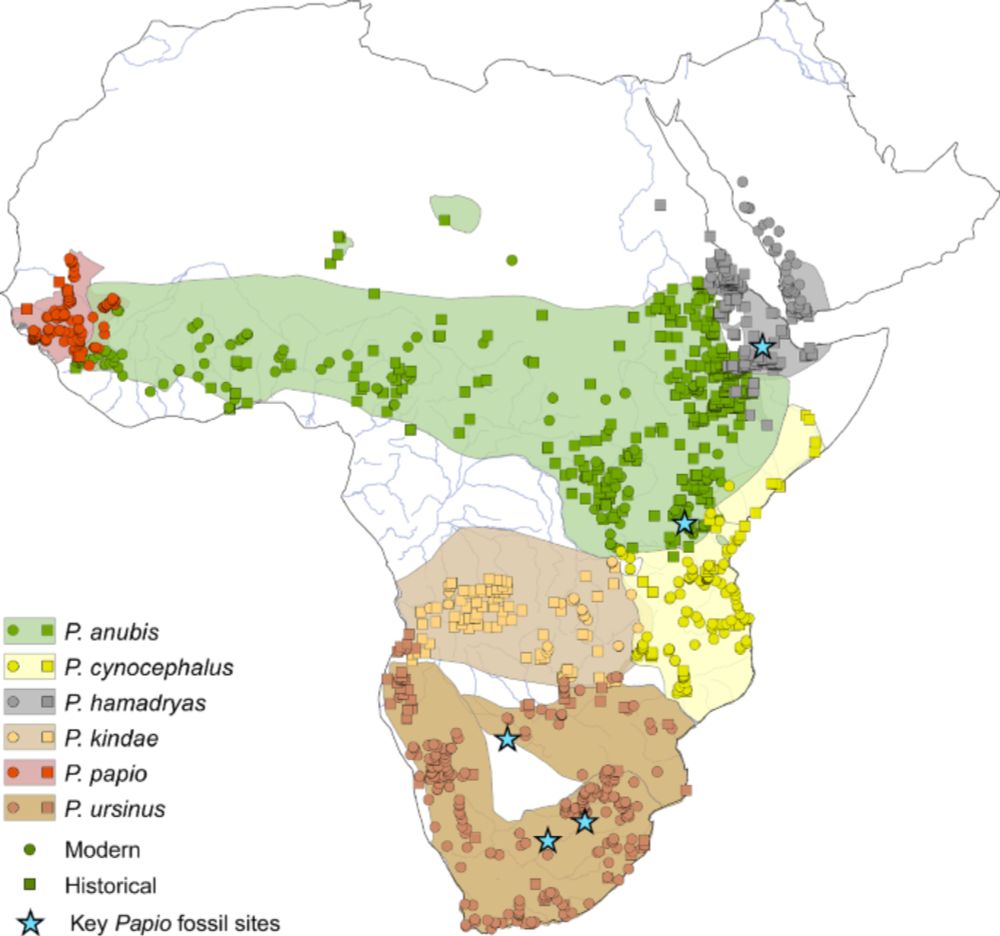
Identifying late Pleistocene and Holocene refugia for baboons - Communications Biology
Hindcasted species distribution modelling of baboons illuminates potential refugia across Africa and Arabia, with predicted maxima and minima of habitable ranges pulsed by orbital precession and obliq...
www.nature.com
July 10, 2025 at 1:59 PM
Hindcasted species distribution modelling of baboons illuminates potential refugia across Africa and Arabia, with predicted maxima and minima of habitable ranges pulsed by orbital precession and obliquity expressed within the last precessional cycle. www.nature.com/articles/s42...
Reposted by Michela Leonardi
US EPA science shutdown endangers health of people and planet 🌎 🌐 theconversation.com/the-us-envir...
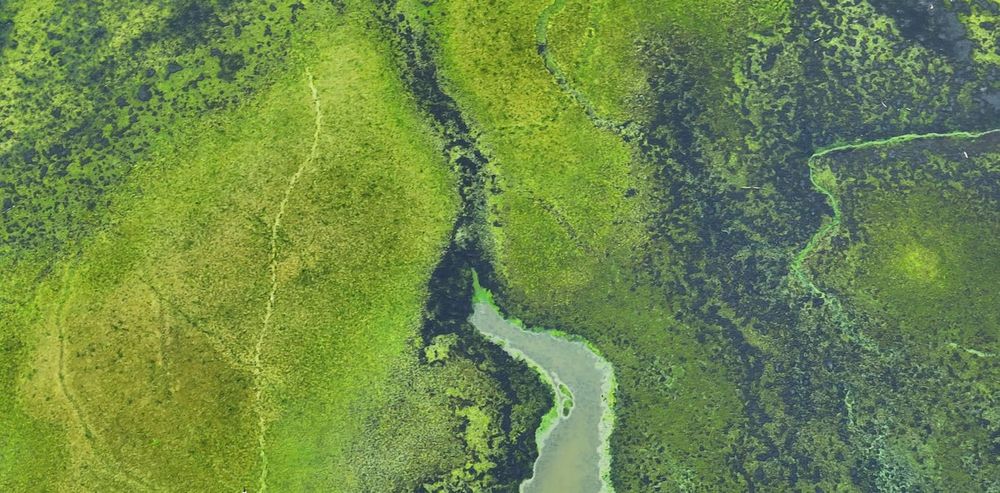
The US Environmental Protection Agency’s retreat from science endangers the health of people and the planet
From detecting pollutants to assessing health risks, the US EPA’s Office of Research and Development has long ensured that environmental decisions are grounded in credible, cutting-edge science.
theconversation.com
July 19, 2025 at 5:10 PM
US EPA science shutdown endangers health of people and planet 🌎 🌐 theconversation.com/the-us-envir...
Reposted by Michela Leonardi
You can also now see it as part of the Richard Owen: A Natural Legacy display in the @nhm-london.bsky.social ‘s free Images of Nature gallery alongside other original #illustrations from Owen’s fascinating drawings collection #naturalhistory #art #gallery #echidna #anatomy

July 19, 2025 at 3:57 PM
You can also now see it as part of the Richard Owen: A Natural Legacy display in the @nhm-london.bsky.social ‘s free Images of Nature gallery alongside other original #illustrations from Owen’s fascinating drawings collection #naturalhistory #art #gallery #echidna #anatomy
Reposted by Michela Leonardi
Fabulous news that @martamlahr.bsky.social has been elected a Fellow of the British Academy 🍾🍾🍾

July 18, 2025 at 9:15 AM
Fabulous news that @martamlahr.bsky.social has been elected a Fellow of the British Academy 🍾🍾🍾
Reposted by Michela Leonardi
Molecules from 20-million-year-old rhino's teeth are among the oldest ever sequenced. New @nature.com paper by Professor Andrea Manica and @mikleonardi.bsky.social @eegcam.bsky.social out now: www.nature.com/articles/s41...
Read more here: www.nature.com/articles/d41...
Read more here: www.nature.com/articles/d41...
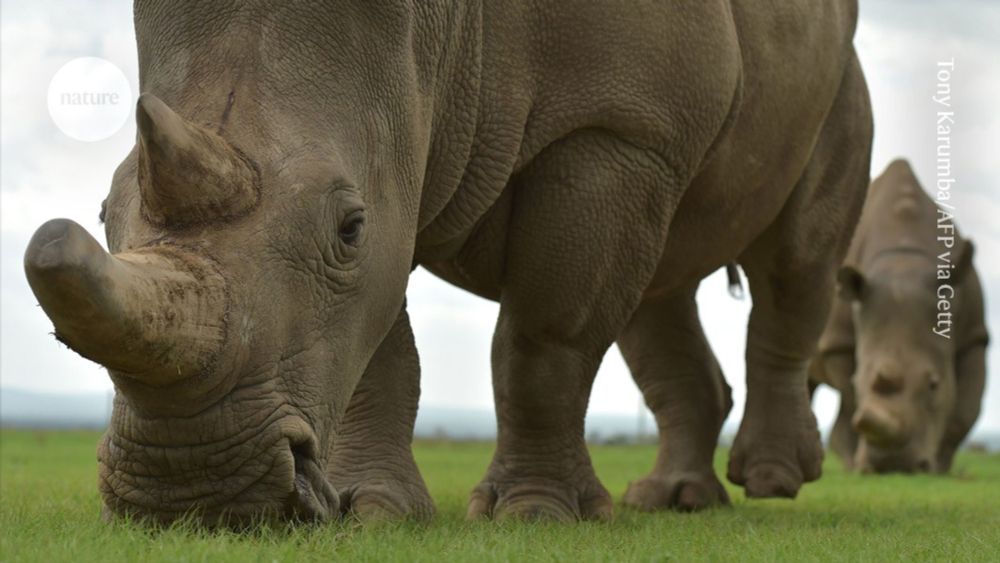
Ancient proteins rewrite the rhino family tree — are dinosaurs next?
Molecules from 20-million-year-old teeth are among the oldest ever sequenced.
www.nature.com
July 11, 2025 at 9:39 AM
Molecules from 20-million-year-old rhino's teeth are among the oldest ever sequenced. New @nature.com paper by Professor Andrea Manica and @mikleonardi.bsky.social @eegcam.bsky.social out now: www.nature.com/articles/s41...
Read more here: www.nature.com/articles/d41...
Read more here: www.nature.com/articles/d41...
Reposted by Michela Leonardi
Andrea and @mikleonardi.bsky.social contributed to a @nature.com paper recovering phylogenetically informative proteins from a ~21M year rhino: www.nature.com/articles/s41...
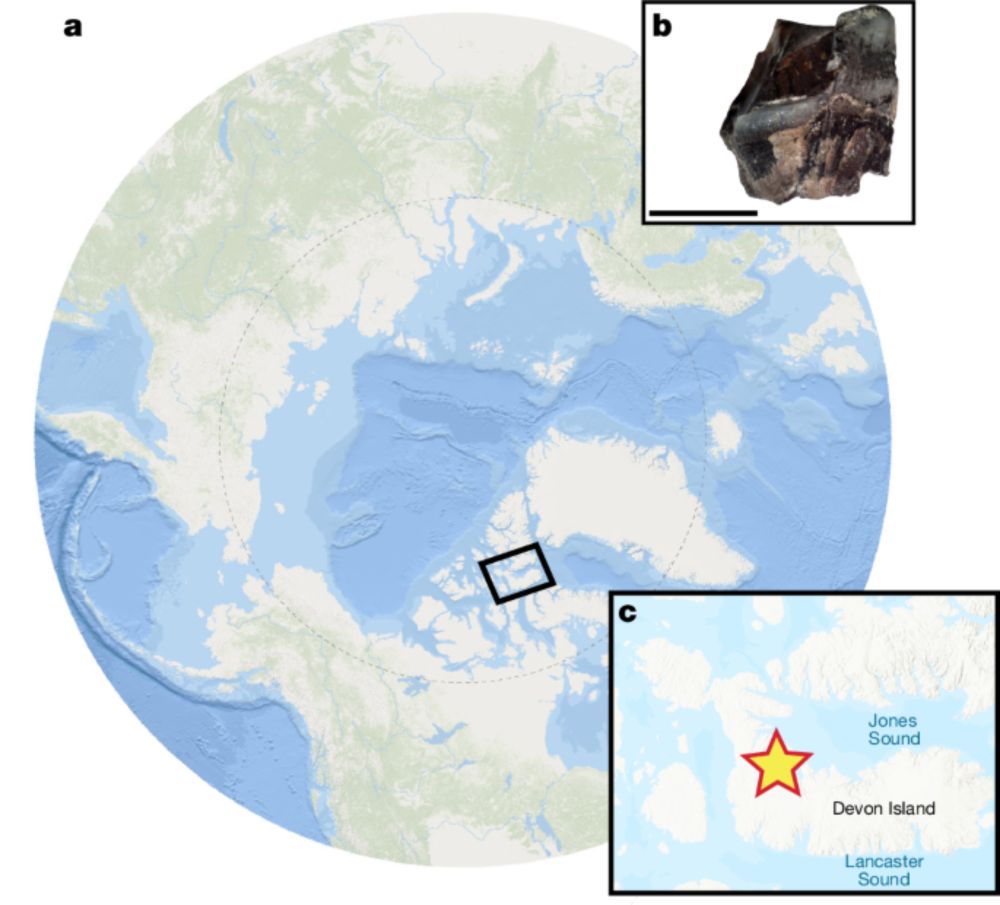
Phylogenetically informative proteins from an Early Miocene rhinocerotid - Nature
Protein sequences from fossil tooth enamel of a rhinocerotid from Canada’s High Arctic are used to develop phylogenetic frameworks from a specimen too old to preserve ancient DNA.
www.nature.com
July 10, 2025 at 2:35 PM
Andrea and @mikleonardi.bsky.social contributed to a @nature.com paper recovering phylogenetically informative proteins from a ~21M year rhino: www.nature.com/articles/s41...
Reposted by Michela Leonardi
Very pleased to see our paper published online at Climate of the Past: cp.copernicus.org/articles/21/...
We present model-data comparisons of Late Quaternary climate across the Northern Hemisphere, showing that increasing model resolution has little net effect on coherence with pollen proxies 😊
We present model-data comparisons of Late Quaternary climate across the Northern Hemisphere, showing that increasing model resolution has little net effect on coherence with pollen proxies 😊
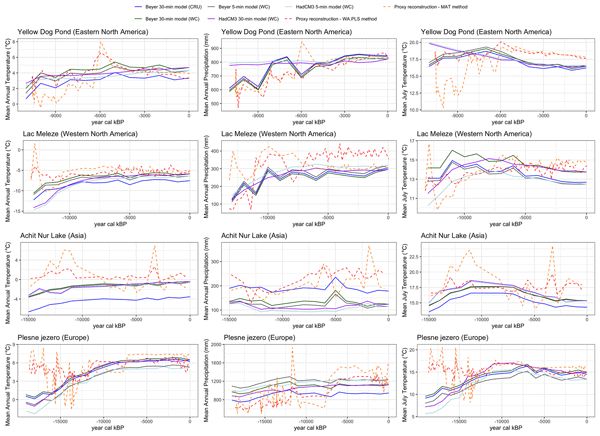
More is not always better: delta-downscaling climate model outputs from 30 to 5 min resolution has minimal impact on coherence with Late Quaternary proxies
Abstract. Both proxies and models provide key resources to explore how palaeoenvironmental changes may have impacted diverse biotic communities and cultural processes. While proxies are thought to pro...
cp.copernicus.org
July 10, 2025 at 9:09 AM
Very pleased to see our paper published online at Climate of the Past: cp.copernicus.org/articles/21/...
We present model-data comparisons of Late Quaternary climate across the Northern Hemisphere, showing that increasing model resolution has little net effect on coherence with pollen proxies 😊
We present model-data comparisons of Late Quaternary climate across the Northern Hemisphere, showing that increasing model resolution has little net effect on coherence with pollen proxies 😊
Reposted by Michela Leonardi
New paper in collaboration with @lucytimbrell96.bsky.social and @jblinkhorn.bsky.social, with several of us involved (@mikleonardi.bsky.social @margheritac17.bsky.social @andreavpozzi.bsky.social) shows that downscaling palaeoclimate models doesn't necessarily improve coherence with proxy data.
Very pleased to see our paper published online at Climate of the Past: cp.copernicus.org/articles/21/...
We present model-data comparisons of Late Quaternary climate across the Northern Hemisphere, showing that increasing model resolution has little net effect on coherence with pollen proxies 😊
We present model-data comparisons of Late Quaternary climate across the Northern Hemisphere, showing that increasing model resolution has little net effect on coherence with pollen proxies 😊

More is not always better: delta-downscaling climate model outputs from 30 to 5 min resolution has minimal impact on coherence with Late Quaternary proxies
Abstract. Both proxies and models provide key resources to explore how palaeoenvironmental changes may have impacted diverse biotic communities and cultural processes. While proxies are thought to pro...
cp.copernicus.org
July 10, 2025 at 9:22 AM
New paper in collaboration with @lucytimbrell96.bsky.social and @jblinkhorn.bsky.social, with several of us involved (@mikleonardi.bsky.social @margheritac17.bsky.social @andreavpozzi.bsky.social) shows that downscaling palaeoclimate models doesn't necessarily improve coherence with proxy data.
Reposted by Michela Leonardi
Last week, Andrea sat down with Dr Chris Smith of Naked Scientists to talk about our paper on the expansion of the human niche 70k year ago: www.thenakedscientists.com/articles/int...

Humanity's road to dominance began earlier than expected
Getting sapient about sapiens...
www.thenakedscientists.com
June 23, 2025 at 1:15 PM
Last week, Andrea sat down with Dr Chris Smith of Naked Scientists to talk about our paper on the expansion of the human niche 70k year ago: www.thenakedscientists.com/articles/int...
Yesterday it was staff party day at @nhm-london.bsky.social. Coolest event ever 😍
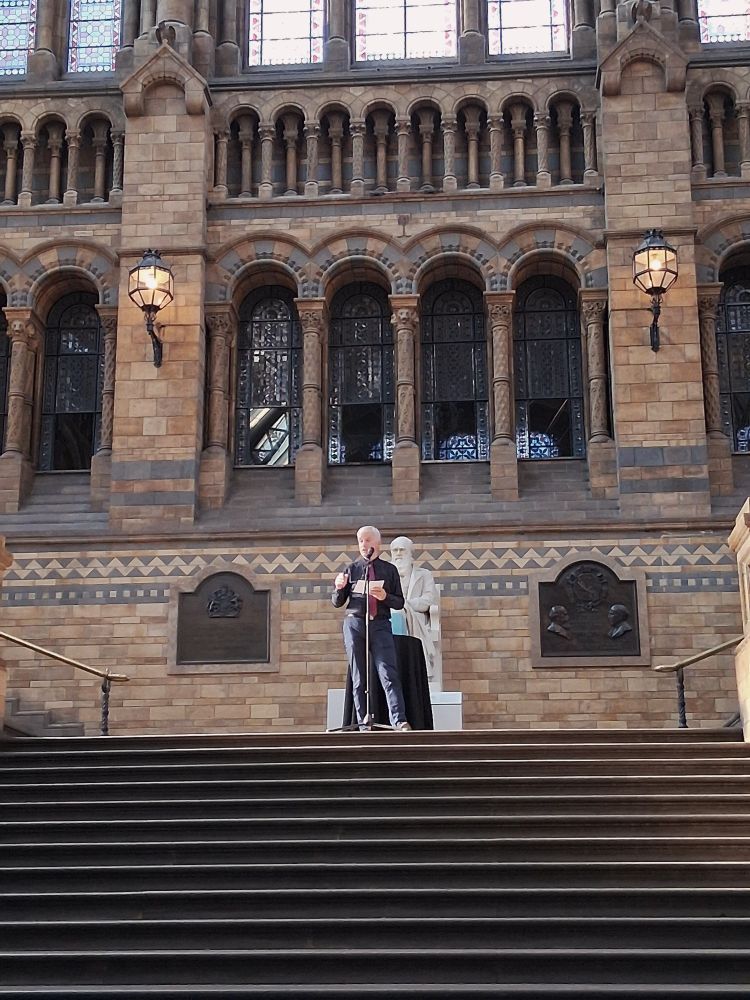

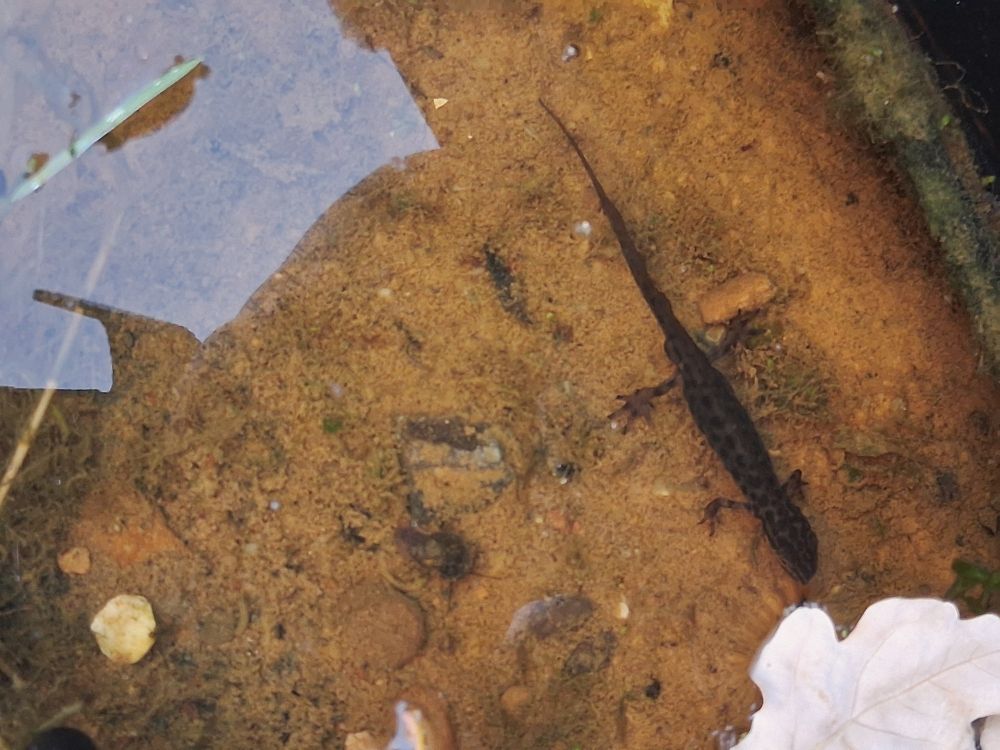
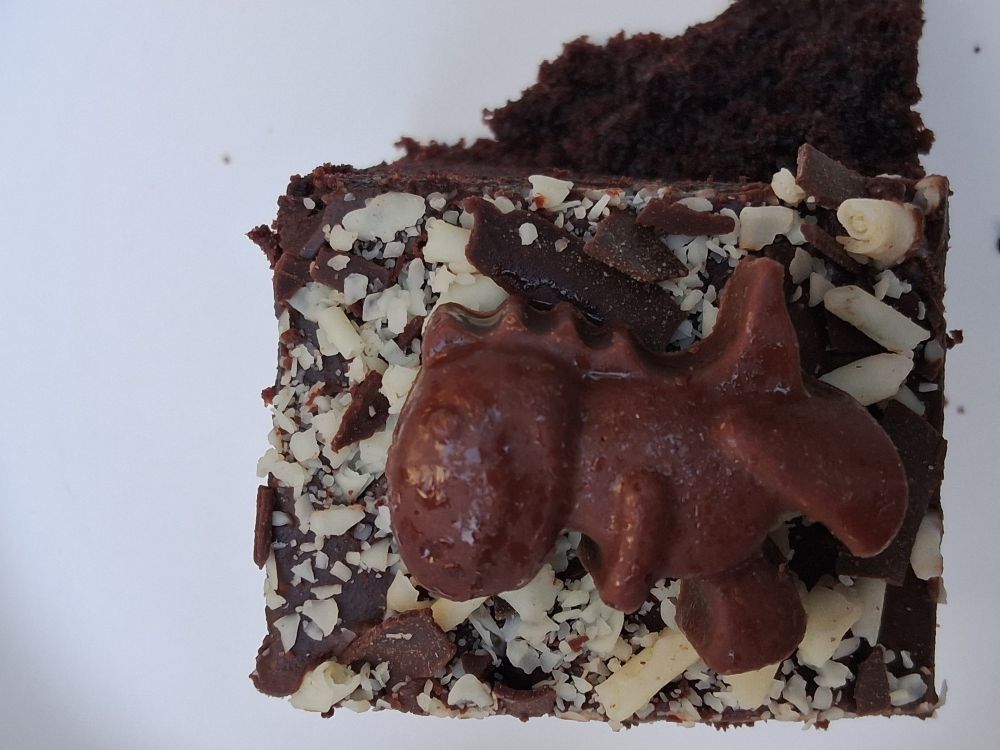
July 3, 2025 at 8:52 PM
Yesterday it was staff party day at @nhm-london.bsky.social. Coolest event ever 😍
Reposted by Michela Leonardi
Eine neue Nature-Studie erklärt, warum frühe Wanderungsversuche des Menschen nicht gelangen. Die Menschheit musste zunächst in Afrika lernen, verschiedene Arten von Habitaten zu erschließen. Grundlage der Arbeit ist die Datenbank „ROAD“ unserer Forschungsstelle ROCEEH.
www.nature.com/articles/s41...
www.nature.com/articles/s41...
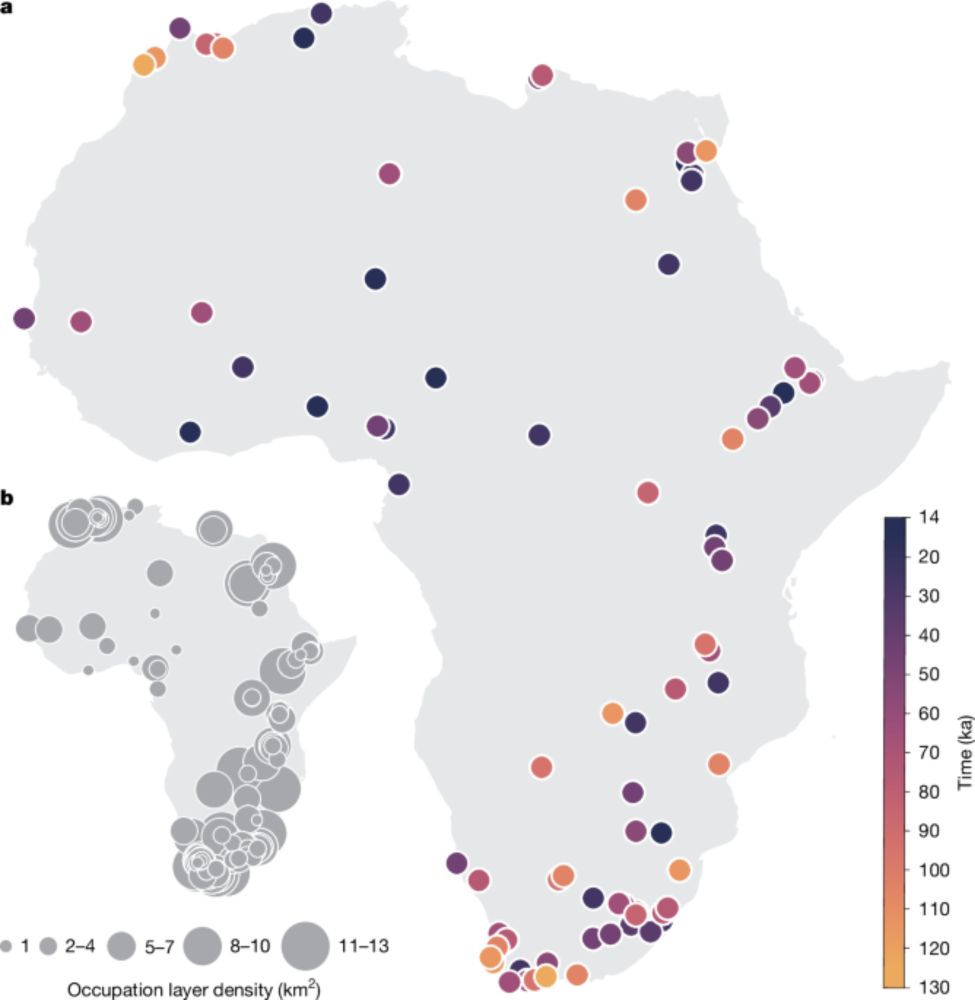
Major expansion in the human niche preceded out of Africa dispersal - Nature
Analysis of species distribution models in a pan-African database comprising chronometrically dated archaeological sites over the past 120,000 years shows major expansion in the human niche from 70 ka...
www.nature.com
June 27, 2025 at 12:22 PM
Eine neue Nature-Studie erklärt, warum frühe Wanderungsversuche des Menschen nicht gelangen. Die Menschheit musste zunächst in Afrika lernen, verschiedene Arten von Habitaten zu erschließen. Grundlage der Arbeit ist die Datenbank „ROAD“ unserer Forschungsstelle ROCEEH.
www.nature.com/articles/s41...
www.nature.com/articles/s41...
An invaluable software for #popgen! Congrats @eviecarter41.bsky.social, @eegcam.bsky.social and colleagues for this tool! 🧬
We are excited to announce that tidypopgen – a new package for rapid population genetic workflows in R – is now available at evolecolgroup.github.io/tidypopgen/ 🧬💻 Read more in the preprint describing its features here: www.biorxiv.org/content/10.1... #popgen #Rpackage #genetics 1/2
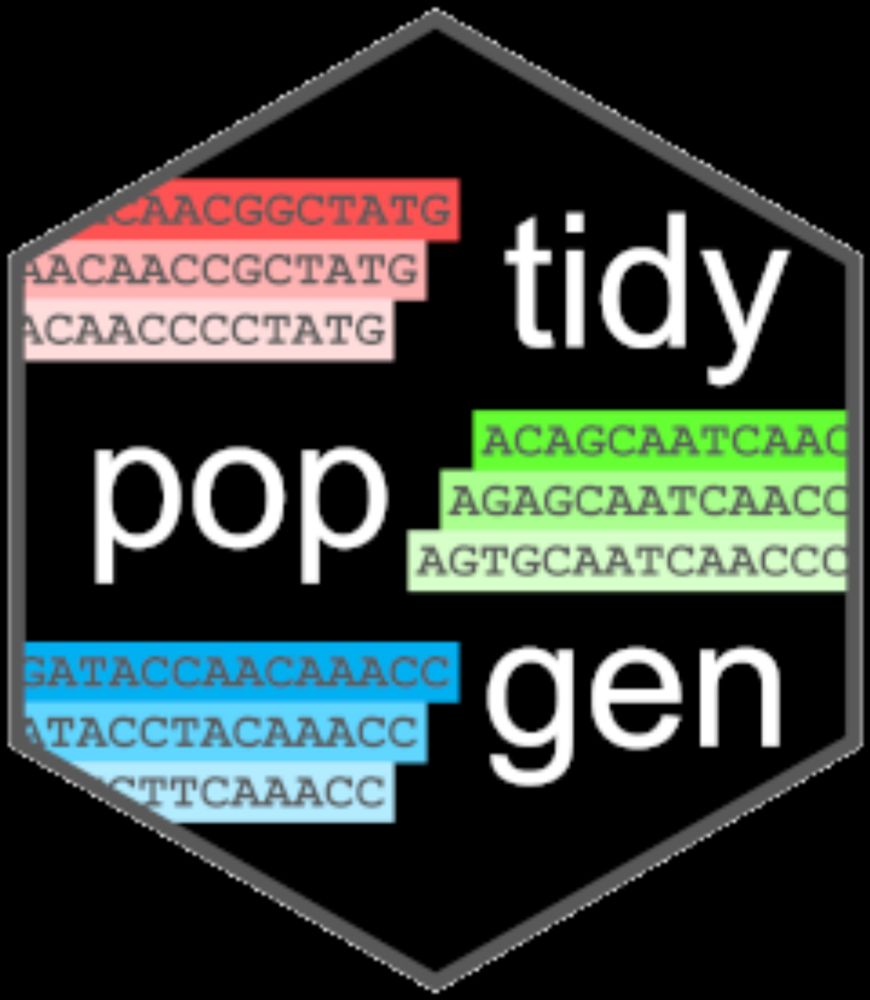
Tidy Population Genetics
We provide a tidy grammar of population genetics, facilitating the manipulation and analysis of data on biallelic single nucleotide polymorphisms (SNPs). `tidypopgen` scales to very large genetic data...
evolecolgroup.github.io
June 25, 2025 at 6:15 PM
An invaluable software for #popgen! Congrats @eviecarter41.bsky.social, @eegcam.bsky.social and colleagues for this tool! 🧬
Reposted by Michela Leonardi
Sharing ideas might have helped Homo sapiens adapt for life outside Africa www.nhm.ac.uk/discover/new...

Sharing ideas might have helped Homo sapiens adapt for life outside Africa | Natural History Museum
As humans adapted to new environments, they might have better able to share ideas with other groups.
www.nhm.ac.uk
June 19, 2025 at 4:17 PM
Sharing ideas might have helped Homo sapiens adapt for life outside Africa www.nhm.ac.uk/discover/new...
Reposted by Michela Leonardi
🧪By our colleague @wbanks33.bsky.social in @nature.com H. sapiens expanded their ecological niches within Africa, occupied a broade range of habitats before their exit into Eurasia 60 ka. Adaptation as a path to long migration shorturl.at/Mfus8 @cnrsecologie.bsky.social @univbordeaux.bsky.social
Homo sapiens adapted to diverse habitats before successfully populating Eurasia | Nature
Ecological modelling reveals that the range of habitats humans occupied in Africa increased before our species established a lasting presence outside the continent. Ecological modelling reveals that the range of habitats humans occupied in Africa increased before our species established a lasting presence outside the continent.
shorturl.at
June 18, 2025 at 6:18 PM
Reposted by Michela Leonardi
Around 70,000 years ago, our ancestors in Africa began exploiting different habitats.
Flexibility to survive in deserts to rainforests enabled their successful spread ‘Out of Africa’.
Find out more about the study co-led by Andrea Manica @eegcam.bsky.social 👇
bit.ly/4e6i9H7
Flexibility to survive in deserts to rainforests enabled their successful spread ‘Out of Africa’.
Find out more about the study co-led by Andrea Manica @eegcam.bsky.social 👇
bit.ly/4e6i9H7

June 18, 2025 at 3:46 PM
Around 70,000 years ago, our ancestors in Africa began exploiting different habitats.
Flexibility to survive in deserts to rainforests enabled their successful spread ‘Out of Africa’.
Find out more about the study co-led by Andrea Manica @eegcam.bsky.social 👇
bit.ly/4e6i9H7
Flexibility to survive in deserts to rainforests enabled their successful spread ‘Out of Africa’.
Find out more about the study co-led by Andrea Manica @eegcam.bsky.social 👇
bit.ly/4e6i9H7
Reposted by Michela Leonardi
Here is a thread detailing the main findings of the paper by the key people driving this study!
#newpaper now out in @nature.com!
A huge expansion of the human niche in Africa ~70 kya likely equipped later #outofAfrica dispersals with a unique ecological flexibility.
www.nature.com/articles/s41...
led by Emily Hallett, @mikleonardi.bsky.social, Andrea Manica, @elliescerri.bsky.social 1/4
A huge expansion of the human niche in Africa ~70 kya likely equipped later #outofAfrica dispersals with a unique ecological flexibility.
www.nature.com/articles/s41...
led by Emily Hallett, @mikleonardi.bsky.social, Andrea Manica, @elliescerri.bsky.social 1/4

Major expansion in the human niche preceded out of Africa dispersal - Nature
Analysis of species distribution models in a pan-African database comprising chronometrically dated archaeological sites over the past 120,000 years shows major expansion in the human niche from 70 ka...
www.nature.com
June 18, 2025 at 5:05 PM
Here is a thread detailing the main findings of the paper by the key people driving this study!


